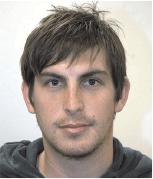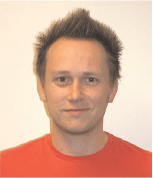New constraints on stress and fracture orientations in the Shipwreck Trough, Otway Basin: implications for conventional and unconventional exploration and production
D. Tassone A , S. Holford A , R. King B and G. Backé A CA Australian School of Petroleum, The University of Adelaide.
B The University of Adelaide.
C CO2CRC.
The APPEA Journal 52(2) 697-697 https://doi.org/10.1071/AJ11111
Published: 2012
Abstract
A detailed understanding of the in-situ stress tensor within energy-rich basins is integral for planning successful drilling completions, evaluating the reactivation potential of sealing faults and developing unconventional plays where fracture stimulation strategies are required to enhance low permeability reservoirs. Newly available leak-off test results interpreted using a new method for analysing leak-off test data constrains the minimal horizontal stress magnitude for the offshore Shipwreck Trough wells to be ∼20 MPa/km, which is similar to the vertical stress magnitude derived from wireline data for depths shallower than ∼2–2.5 km.
Breakouts interpreted from image log data reveal a ∼northwest–southeast maximum horizontal stress orientation and formation pressure tests confirm near-hydrostatic conditions for all wells.
The new method for analysing leak-off test data has constrained the upper limit of the maximum horizontal stress magnitude to be the greatest, indicating a reverse-to-strike-slip faulting regime, which is consistent with neotectonic faulting evidence.
Petrophysical wireline data and image log data to characterise extant natural fracture populations within conventional reservoirs and stratigraphic units that may be exploited as future unconventional reservoirs have also been used. These fracture sets are compared with possible fracture populations recognised in contiguous, high-fidelity 3D seismic datasets using a new method for identifying fracture systems based on attribute mapping techniques.
This study represents the first of its kind in the Otway Basin. Combined analysis of the in-situ stress tensor and fracture density and geometries provides a powerful workflow for constraining fracture-related fluid flow pathways in sedimentary basins.

David Tassone is a PhD student at the Australian School of Petroleum. He graduated with a BSc (hons) from The University of Adelaide in 2008. His research interests include geomechanics as well as the burial history of sedimentary basins and the associated tectonic scale processes. Member: AAPG, ASEG, PESA, EAGE. |

Simon Holford is an Australian Research Council post-doctoral fellow and lecturer at the Australian School of Petroleum. He is the deputy director of the Centre for Tectonics, Resources and Exploration (TRaX) at the University of Adelaide. He graduated with a BSc (hons) from Keele University (2001) and a PhD from the University of Birmingham (2006). His research interests are in the deformation, uplift and magmatic evolution of rifted margins, sedimentary basins, and continental interiors and their impact on hydrocarbon exploration. Member: AGU, ASEG, GSA, GSL, PESA. |

Rosalind King completed her BSc (hons) and PhD at the University of Liverpool in 2001 and 2005, respectively. Her PhD research studied the structural evolution of the Cape Fold Belt in South Africa. She worked as a post-doctoral researcher at the Australian School of Petroleum (University of Adelaide) from 2005 to 10, studying the present-day stresses of northwest Borneo and delta—deepwater fold-thrust belts. She is a lecturer at the School of Earth and Environmental Sciences (University of Adelaide) and her research includes the tectonics of deepwater fold-thrust belts, detachments, fold and thrust mechanics, and petroleum geomechanics. She serves as the president of the South Australian Branch of PESA. Member: GSL, AAPG, PESA. |

Guillaume Backé is a structural geologist with an expertise in seismic interpretation, three-dimensional structural and geomechanical modeling. He obtained a Master of Geophysics at the University of Toulouse III in France in June 2002, and completed a PhD at the University of Pau et des Pays de l´Adour in 2006. He very recently joined BP as a structural geologist in the Integrated Sub-surface and Description and Modelling team (ISDM), following a two-year Postdoctoral position in the Centre for Mineral Exploration Under Cover (CMXUC) and a three-year lecturing position at the Australian School of Petroleum of the University of Adelaide. Member: AAPG, PESA, AGU and EAGE. |
References
Backé, G., Abul Khair, H., King, R., and Holford, S.P. (2011). Fracture mapping and modelling in shale-gas target in the Cooper Basin, South Australia. APPEA Journal 51, 397–410.Chopra, S., and Marfurt, K., 2007—Seismic curvature attributes for mapping faults/fractures, and other stratigraphic features. CSEG Recorder, November, 37–41.
Constantine, A.E., Lonergan, M., and Parvar, J., 2007—Halladale-1 DW1 well completion report interpretive data VIC/P37(v) offshore Otway Basin Victoria.
Jaeger, J.C., and Cook, N.G.W., 1979—Fundamentals of Rock Mechanics (2nd edn.) New York: Chapman and Hall.
Ludwig, W.J., Nafe, J.E., and Drake, C.L., 1970—Seismic refraction. In: Maxwell, A.E. (ed.) The Sea, Vol 4. New York: Wiley-Interscience, 53–84.
Tingay, M.R.P., Hillis, R.R., Swarbrick, R.E., and Okpere, E.C. (2003). Variation in vertical stress in the Baram Basin, Brunei: tectonic and geomechanical implications. Marine and Petroleum Geology 20, 201–12.
Zoback, M.D., 2010—Reservoir Geomechanics. New York: Cambridge University Press.


